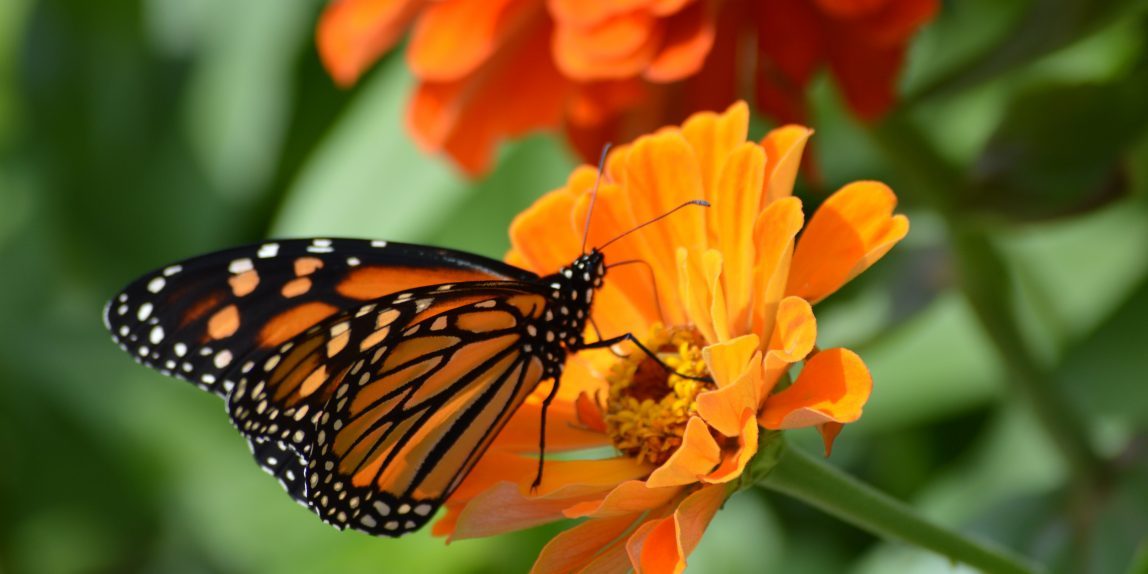Exploring Below, Above, and Beyond

Have you ever found yourself wishing you had more help in the garden? Someone to turn the soil, clean up the leaves, and keep unwanted pests to a minimum? Lucky for us, there is a network of small garden friends that love to help maintain a healthy garden.

Let’s dig below –
Earthworms are the building blocks of soil formation because of the castings they excrete. Full of beneficial microbes and organic matter, castings are what remain after an earthworm has digested organic matter such as leaves and garden debris. The process of an earthworm’s digestion and excretion is beneficial to your garden because it speeds up the composting process and provides more nutrients to the soil.
Further, having earthworms in your garden is beneficial because they allow for a greater amount of soil aeration when they dig their burrows. Capable of burrowing three feet deep, earthworms are natural soil tillers and can redistribute micronutrients as they move between layers of soil.
To maintain a healthy number of earthworms in your garden, you’ll want to make sure that there is enough moisture and air in the soil. If there is too much moisture, there will not be enough air and the earthworms will come to the surface and won’t survive long. Oppositely, if there is not enough moisture, the earthworms will die in the dry soil.
You may encourage earthworms to stay in your garden by adding layers of organic mulches and matter. Not only will this provide the earthworms with organic matter to consume, but it will also help maintain moisture levels and regulate the soil temperature.

Let’s explore above –
Now that you understand how our friends below help maintain our garden, let’s look above to the surface of the soil where there are lizards, whiptails, and geckos. While you may have seen these garden friends scurrying around your yard, you might not have known that they benefit your garden by keeping unwanted bugs to a minimum. Serving as a natural pest control, these small reptiles will eat insects such spiders, beetles (cockroaches), ants, termites, flies, and even scorpions! To encourage a diverse population of small reptiles in your garden, you will want to provide a nice habitat consisting of shelter and areas to sunbathe.

And finally, let’s look beyond –
Looking beyond the soil and garden floor, you’ll find several flying garden friends including ladybugs, bees, butterflies, and hummingbirds.
Similar to lizards, whiptails, and geckos; ladybugs also help to keep unwanted bugs at a minimum. Ladybugs will flock to gardens that have plant-eating insects, such as aphids, then leave once there are no more insects to eat. If you look in your garden and find that you don’t have any lady bugs, it could be that the lady bugs were already present, did their job, and left again. However, if you find that there aren’t ladybugs in your garden, but you are experiencing an issue with plant-eating insects, you might consider releasing a container of ladybugs into your yard, just as the sun sets. Be sure to release the ladybugs when it is dark, as there is an increased chance for the ladybugs to settle into their new habitat.
On the other hand, bees, butterflies, and hummingbirds are helpful to our gardens because they play vital roles in the pollination process. While all our pollinator friends do a great job, they each have unique talents that contribute to the overall health of the garden. For example, the bee can carry more pollen on its body than a butterfly, but a butterfly can fly a longer distance which allows pollen to travel further. Additionally, the hummingbird’s small body and large beak allow pollination to occur in places that are unreachable by the bees and butterflies.
The next time you step outside into your garden, look beyond the flowers, veggies, shrubs, and trees to find our garden friends hard at work. If you look carefully enough, you might discover a diverse ecosystem in your own backyard!
